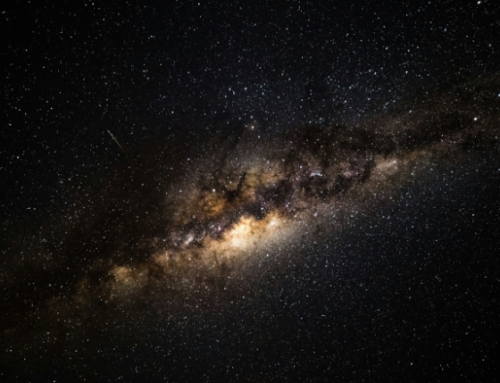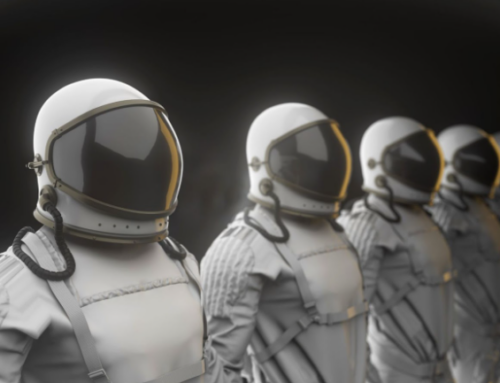Astronauts who go into space have many opportunities for discovery, research, and adventure. However, space is extremely harsh to the human body, even amongst the most highly-trained and seasoned astronauts. Dealing with human health during both short-term and long-term space missions continues to be a focus.
Historically, data on astronaut health has only been taken from a rather small number (hundreds) of rather healthy, carefully-selected astronauts. As private sector access to space grows, having a solid biomedical data resource covering the ever-growing variety of space travelers will become increasingly critical.
The Translational Research Institute for Space Health (TRISH) at Baylor College of Medicine is supported by NASA’s Human Research Program. TRISH seeks new technologies and conducts research to assess and protect human health in space. They are now utilizing a new set of private space data to understand how space travel affects human health and productivity by obtaining data from commercial spaceflight participants (private sector astronauts)
The Mission for Astronaut Health
A mission chartered by Axiom Space mission to the International Space Station (AX-2) was conducted in Spring 2023 that included research collecting data on the four commercial astronauts. Speaking to NPR, Dr. Emmanuel Urquieta, Chief Medical Officer at TRISH, said, “One of the biggest things we learned [from the Axiom mission] is how diverse, from a healthcare perspective, these space participants are and this will be extremely useful for commercial space providers, but also government space agencies planning to go back to the Moon and Mars. We will start seeing some similar conditions [to enhance space health data] in the future.”
Collecting Medical Data
For the past decades biomedical researchers sought to collect data that will be operationally relevant for both short- and long-term missions. Researchers ensure that these projects are easy to implement and do not require too much training for the astronauts themselves. Due to the nature of how private sector space missions are conducted, data collection from commercial participants can be accomplished in a shorter period of time than has historically been the case with government employee astronauts
Being a part of this research is a once-in-a-lifetime opportunity for these commercial astronauts to help expand our knowledge of human adaptation to spaceflight. Experts from TRISH and other institutions, including the University of Pennsylvania, Baylor College of Medicine, and Johns Hopkins University, are looking for feedback on the following areas of health such as:
- Standardized research questionnaires, TRISH: Questionnaires on astronauts’ health background, personality, sleep, team dynamics and immune systems are self-recorded during the mission. The info will be distributed into TRISH’s EXPAND research database for scientists researching space health and its data.
- SANS Surveillance, TRISH: Spaceflight Associated Neuro-Ocular Syndrome (SANS) results in changes in brain and eye function and is a top healthcare risk in space. Vision function data and ocular images were conducted in phases throughout the mission.
- Sensorimotor adaptation, TRISH: Zero gravity often affects standing and balance. As full body control is difficult in space, data is collected before and after the flight to assess sensorimotor ability and recovery time before humans return to the Moon.
- Cognitive and Physiologic Responses, UPenn: Brain function and performance could be disrupted during spaceflight. This research will help assess astronauts’ memory, space orientation, emotional recognition, attention and risk-related decision-making. Researchers can better understand the impact of spaceflight on mental ability.
- Otolith and Posture Evaluation II, Johns Hopkins University: Motion sickness, disorientation and nausea are common during spaceflight. Research taken via a tablet assessed astronauts’ inner ears and eyes senses and reaction to motion before and immediately after spaceflight.
- Space Omics + BioBank, Baylor College: Biological specimens from astronauts were taken before and after the mission to understand the impact of spaceflight on the genomic level. These critical insights taken from this research will improve our understanding of how space travel impacts human health. In the future, this data can even advance health care on Earth by indicating how alterations in gene expression work under extreme environmental pressures.
The AX-2 crew stayed aboard the ISS for ten days to conduct scientific data, outreach and while conducting commercial research activities. The commercial astronauts collected blood, stool, urine, saliva, and skin swabs and placed them into collection bags. Upon return to Earth, these samples were processed and material was tested using a variety of genetic and physiological procedures. The resulting data was later released to third-party investigators. Instead of waiting years for feedback on health data using traditional government approaches, researchers can use this new data to answer specific questions about the participants’ health changes.
TRISH’s goal is to increase the knowledge of human health and performance during spaceflight. Missions such as AX-2 will help them conduct significant research and collect data in a more efficient fashion. It is not at all uncommon for researchers conducting research in remote locations such as Antarctica or high altitude climbing expeditions to serve as research subjects themselves. The goal is much the same as it is for space: to get the best possible collection of data – from the largest possible population – one that is representative of the full range of personal health profiles that can be expected among the people who visit these remote locations.
The number of humans visiting space will soon blossom from hundreds to thousands of visitors. The more data that can be collected – sooner – the better, safer, and more productive the whole experience of space travel will be – for everyone.






